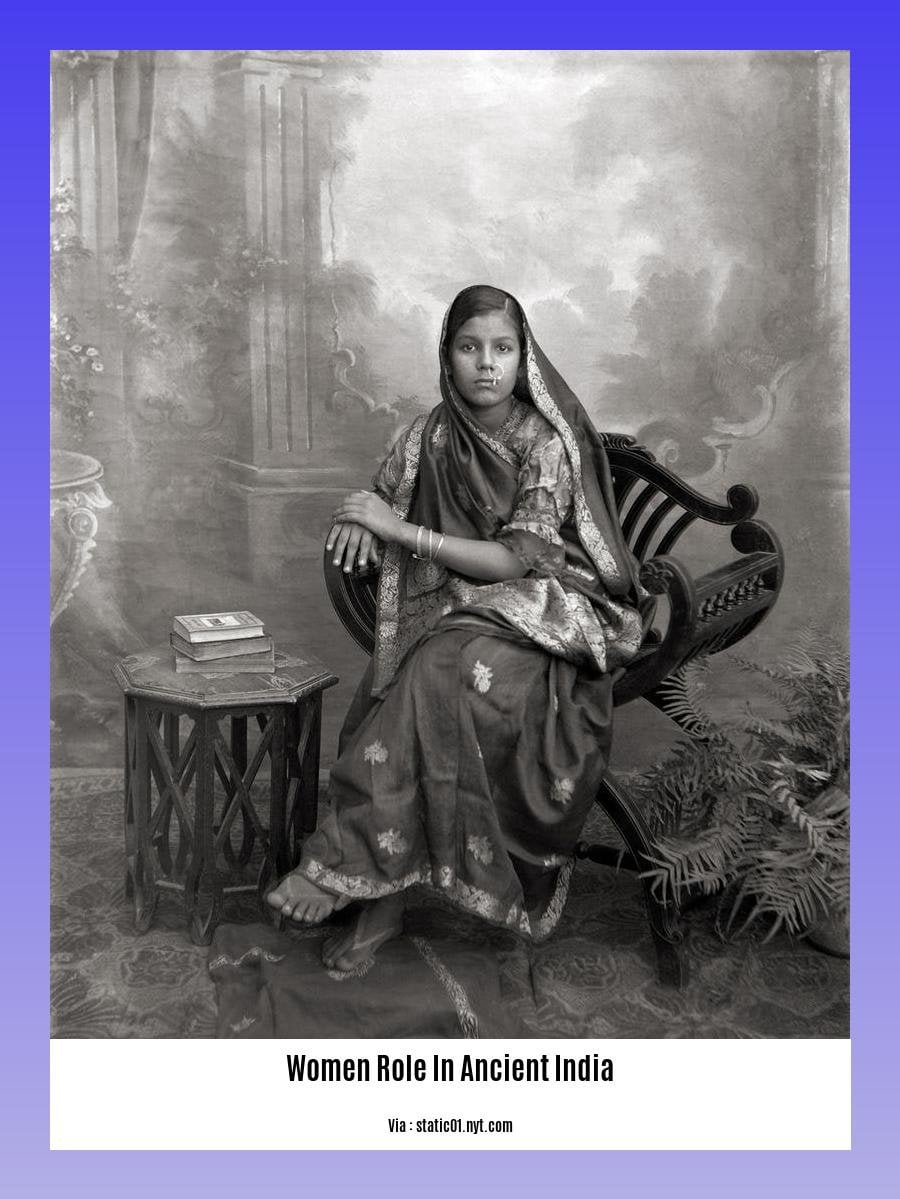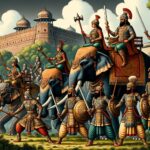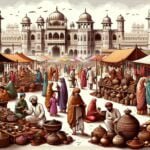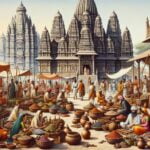Embark on a journey through the annals of time as we uncover the profound impact of women in ancient India. In this exploration, titled “Unraveling the Role of Women in Ancient India: Unearthing Their Contributions to History and Society,” we delve into the rich tapestry of women’s experiences, shedding light on their remarkable achievements and resilience amidst the complexities of ancient Indian society.
Key Takeaways:
- Women in ancient India enjoyed equal status with men in various aspects of life, including education and decision-making.
- Education allowed women to contribute actively to family matters and participate in discussions, shaping their family’s future.
- The ancient system of “Swayamvara” empowered women to choose their own husbands, reflecting their autonomy and agency in marriage.
- Goddesses and feminine forms of the Absolute were widely venerated in ancient India, symbolizing various feminine qualities and energies.
- The worship of these deities highlights the cultural and religious significance accorded to women in ancient Indian culture.
Women’s Role in Ancient India: Unearthing Contributions Throughout History
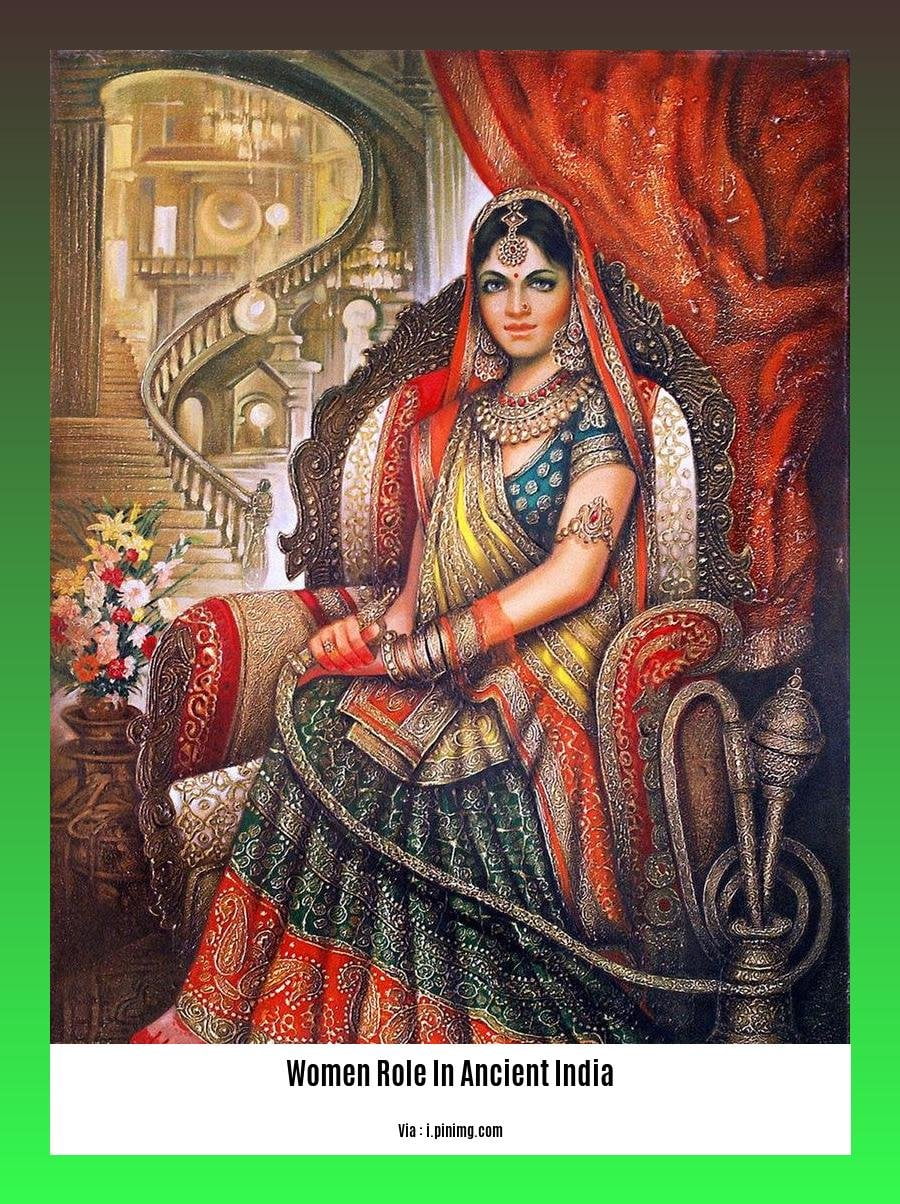
In the vibrant tapestry of ancient India, women held a spectrum of roles that extended beyond domesticity. They actively participated in various societal spheres, shaping the cultural, social, and political landscape of their time.
Women in Politics and Governance:
- Women’s participation in ancient Indian politics was significant, with references to female rulers and advisors in ancient texts.
- The Mauryan Empire witnessed the remarkable reign of Queen Ashoka, who contributed to the empire’s growth and stability.
Women in Education and Literature:
- Women received education in ancient India, with many becoming renowned scholars, poets, and philosophers.
- Gargi, a prominent figure in ancient Indian philosophy, engaged in intellectual debates with renowned sages and philosophers.
Women in Trade and Commerce:
- Women participated in trade and commerce, managing businesses and engaging in economic activities.
- Archaeological evidence suggests women’s involvement in textile production, pottery, and other industries.
Women in Art and Aesthetics:
- Women made significant contributions to art, music, and dance, showcasing their creativity and artistic talents.
- Sculptures and paintings depict women as musicians, dancers, and symbols of beauty and grace.
Women in Religion and Rituals:
- Women played significant roles in religious ceremonies and rituals, often serving as priestesses or spiritual leaders.
- Vedic hymns mention women reciting sacred verses and participating in religious gatherings.
Women’s Rights and Autonomy:
- The rights and autonomy of women in ancient India varied across regions and time periods.
- Evidence suggests that women enjoyed certain rights, such as property ownership and inheritance, in some regions.
Women’s Challenges and Struggles:
- Despite their contributions, women faced challenges and struggles in ancient Indian society.
- Gender discrimination and social norms often limited their opportunities and choices.
Unraveling the diverse roles of women in ancient India provides a nuanced understanding of gender dynamics and societal structures of the time. Their contributions to various aspects of life highlight their resilience, agency, and resilience, shaping the rich tapestry of ancient Indian history.
- Eager to discover the capital of ancient Egypt? Click here for an enthralling journey into the past.
- Want to know who’s behind the iconic Ancient Age bourbon? Find out here and uncover the secrets of this legendary spirit.
- Curious about the role of women in ancient India? Explore this link and embark on a captivating odyssey into their lives and contributions.
Economic and Political Participation
In ancient India, women played significant roles beyond household duties, actively participating in the economic and political spheres.
Their engagement in these domains underscores their agency and influence in shaping society. From trade and commerce to governance and leadership, women across various walks of life made substantial contributions.
Economic Participation
Women actively engaged in economic activities, contributing to the prosperity of ancient Indian society. They participated in diverse occupations, showcasing their skills and entrepreneurship.
Trade and Commerce: Women actively participated in trade and commerce, engaging in business activities, and managing their finances. Archaeological evidence suggests women’s involvement in trade routes, markets, and guilds, demonstrating their economic empowerment.
Agriculture: They played a crucial role in agriculture, assisting in cultivation, sowing, and harvesting crops. Their knowledge of traditional farming practices significantly contributed to agricultural productivity.
Crafts and Handicrafts: Women excelled in various crafts, including pottery, weaving, and jewelry making. Their artistic skills and expertise were highly valued, adding to the economic growth of ancient India.
Political Participation
Women’s political participation in ancient India varied across regions and time periods, but evidence suggests they held influential positions and actively contributed to governance.
Rulers and Advisors: Some women assumed leadership roles as rulers and advisors, making significant political decisions. Queen Ashoka, for example, played a prominent role in the Mauryan Empire, demonstrating women’s capacity for governance.
Chieftains and Tribal Leaders: In tribal societies, women often held positions of authority as chieftains or tribal leaders, leading their communities in political and social matters.
Administrative Roles: Women participated in administrative roles, managing state affairs and assisting rulers in their duties. They contributed to policy-making and the efficient functioning of the government.
Key Takeaways:
Women’s Economic and Political Participation in ancient India was significant, spanning various domains.
Their involvement in trade, commerce, agriculture, crafts, and governance showcased their agency and influence.
Women’s contributions to the economy and politics strengthened ancient Indian society, demonstrating their resilience and impact on history.
Sources:
Women in Ancient India: A Historical and Cultural Perspective
The Role of Women in Ancient Indian Society
Education and Literacy
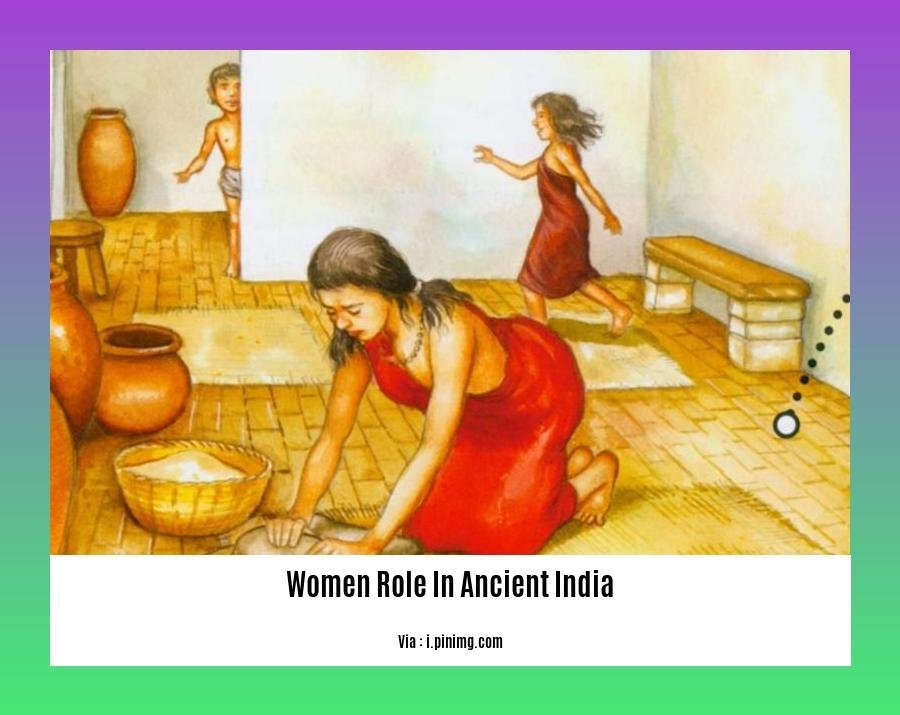
In ancient India, the pursuit of knowledge wasn’t restricted to men. Women actively sought and acquired education, contributing significantly to the cultural and intellectual landscape of the era. Education and literacy played a crucial role in empowering women, providing them with the tools to navigate social norms and shape their destinies.
The Role of Women in Ancient India: Education and Literacy
Throughout history, women in ancient India assumed diverse roles and responsibilities:
Religious Scholars and Preachers: Women like Gargi Vachaknavi engaged in philosophical debates, challenging societal norms and contributing to intellectual discourse.
Teachers and Philosophers: Apala, an ancient Indian philosopher, made significant contributions to the field of ethics and morality, shaping societal values.
Doctors and Healers: Women excelled in the field of medicine, providing medical care and remedies to communities, as evident from archaeological findings.
Artists and Performers: Women expressed their creativity through art, music, and dance, leaving an indelible mark on cultural traditions.
Opportunities and Challenges for Women’s Education
Despite the significant roles women played, their access to education and literacy faced societal constraints:
Gender-Based Discrimination: Patriarchal norms often limited the opportunities for women’s education, relegating them to domestic duties.
Caste and Social Status: Education was largely influenced by caste and social status, with women from higher castes having better access to resources and learning.
Emphasis on Domestic Skills: While education for women focused primarily on domestic skills, a few exceptional individuals defied societal expectations and pursued higher learning.
Impact of Women’s Education on Ancient Indian Society
Despite the challenges, women’s education and literacy had a profound impact on ancient Indian society:
Preservation of Knowledge: Women played a significant role in preserving and transmitting ancient texts, ensuring the continuity of cultural and historical knowledge.
Literary and Artistic Contributions: Women made notable contributions to literature, poetry, and the arts, enriching the cultural fabric of ancient India.
Advancement of Science and Mathematics: Women contributed to the advancement of scientific knowledge, including astronomy and mathematics, leaving a legacy of intellectual curiosity.
Conclusion
Women in ancient India, despite societal limitations, demonstrated resilience and intellectual prowess, leaving an indelible mark on history. Their contributions to education, literacy, and various fields of knowledge continue to inspire generations. Their stories remind us of the transformative power of education and literacy in empowering women and shaping societies.
Key Takeaways:
Women in ancient India played diverse roles as religious scholars, teachers, healers, and artists.
Despite gender-based discrimination and caste restrictions, some women defied societal norms and pursued education and higher learning.
Education and literacy empowered women, enabling them to preserve knowledge, contribute to literature and arts, and advance scientific understanding.
Women’s contributions laid the foundation for cultural and intellectual progress in ancient Indian society.
Sources:
Women’s Education in Ancient India – IndiaNetzone.com.
Women in Religion and Spirituality
Religion and spirituality played a vital role in the lives of ancient Indian women. Since the earliest civilizations, they have actively participated in various religious practices and rituals, holding revered positions as priestesses, spiritual leaders, and goddesses.
Women Goddesses and Deities:
– Ancient Indian Mythology:
– Women Goddesses: Devi, Lakshmi, Saraswati, Kali, and Durga were worshipped as powerful deities, symbolizing strength, wisdom, and protection. These goddesses represented different aspects of life and were revered for their divine powers.
– Priestesses and Seers:
– Women played significant roles as priestesses in religious ceremonies and rituals.
– They performed sacred rituals, offered prayers, and communicated with the divine on behalf of the community.
– Seers such as Gargi Vachaknavi and Maitreyi contributed significantly to ancient Indian philosophy and spiritual thought.
Women and Religious Texts:
- Vedic Literature:
- Women scholars and rishis contributed to the composition of Vedic hymns and texts.
Rig Veda mentions women as seers and composers of hymns, highlighting their spiritual authority.
Upanishads:
- Women like Maitreyi and Gargi engaged in philosophical discussions and debates with renowned sages, demonstrating their profound spiritual knowledge.
Women in Religious Practices:
- Rituals and Ceremonies:
- Women actively participated in religious rituals and ceremonies, offering prayers, performing yajnas (fire rituals), and observing fasts.
- They played important roles in festivals and celebrations, contributing to the preservation and transmission of religious traditions.
Conclusion:
Women in ancient India held significant positions in religion and spirituality. They were revered as goddesses, served as priestesses and seers, contributed to religious texts, and actively participated in religious practices. Their spiritual contributions left an enduring legacy and continue to inspire and influence religious and spiritual traditions in India today.
Key Takeaways:
– Ancient Indian Mythology: Women goddesses were worshipped as powerful deities, symbolizing strength, wisdom, and protection.
– Priestesses and Seers: Women held revered positions as priestesses and seers, performing rituals, offering prayers, and contributing to spiritual knowledge.
– Vedic Literature: Women contributed to the composition of Vedic hymns and texts, demonstrating their spiritual authority.
– Upanishads: Women engaged in philosophical discussions and debates, showcasing their profound spiritual knowledge.
– Religious Practices: Women actively participated in religious rituals, ceremonies, festivals, and celebrations, helping to preserve and transmit religious traditions.
Sources:
– Women and Religion in Ancient India
– The Role of Women in Religion in Ancient India
FAQ
Q1: What were the societal norms surrounding women in ancient India?
A1: Women in ancient India enjoyed equal status with men in various aspects of life, including education, decision-making, and marriage. They actively participated in family matters, held influential roles, and had the freedom to choose their husbands through the practice of Swayamvara.
Q2: How did ancient Indian women contribute to decision-making processes?
A2: Women in ancient India were actively involved in decision-making within their families. They participated in discussions and held influential roles, shaping the family’s future and well-being. Their contributions were valued, and their opinions were respected.
Q3: What was the practice of Swayamvara, and how did it empower women?
A3: Swayamvara was an ancient Indian practice that empowered women with the freedom to choose their own husbands. During a Swayamvara ceremony, eligible young women would gather, and prospective suitors would present themselves. The women had the right to select their life partners based on their own preferences, emphasizing their autonomy and agency in marriage.
Q4: How were women revered in ancient Indian culture and religion?
A4: Women in ancient India were highly revered in culture and religion. Goddesses and feminine forms of the Absolute were widely venerated, symbolizing various feminine qualities and energies. The worship of these deities highlights the respect and reverence accorded to women in ancient Indian society.
Q5: What are some examples of prominent women in ancient India who made significant contributions?
A5: Ancient India witnessed several notable women who made significant contributions to society. Gargi Vachaknavi, Apala, and Maitreyi were renowned women scholars who excelled in philosophy, mathematics, and astronomy. These women challenged societal norms, actively participated in intellectual pursuits, and left a lasting legacy through their contributions.
